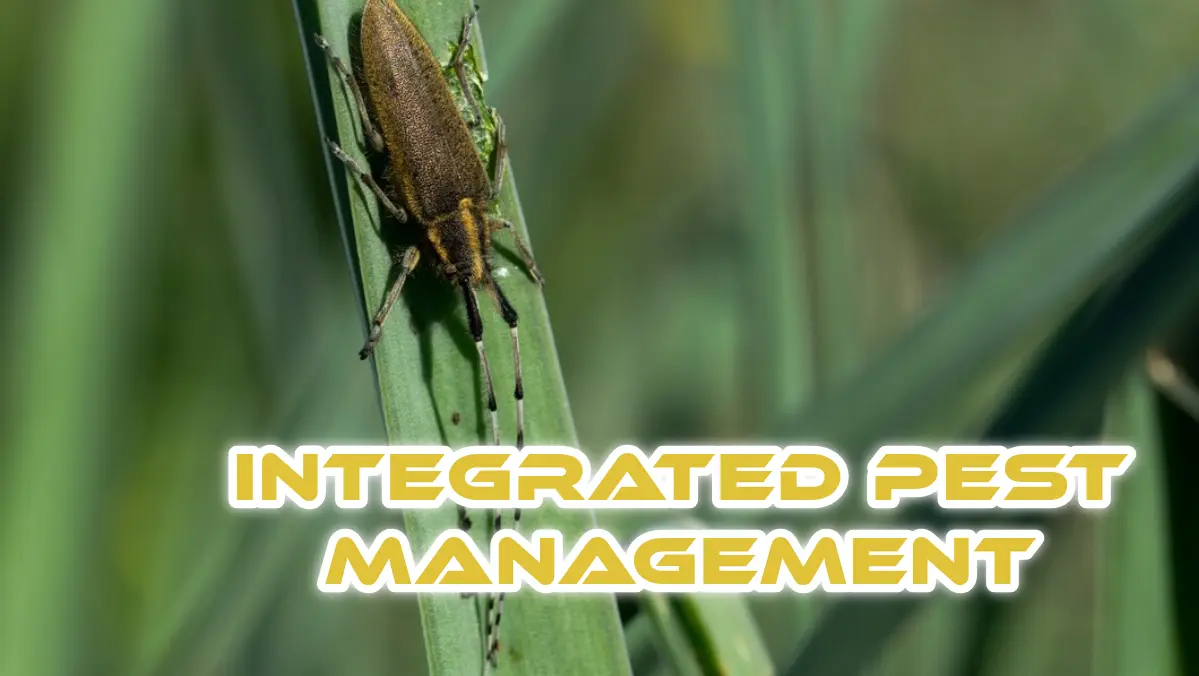
August 24, 2025

Integrated Pest Management (IPM) represents a holistic and sustainable approach to managing agricultural, urban, and natural pests. This contrasts conventional pest control methods, which frequently rely extensively on chemical pesticides. This method utilizes a combination of mechanical, physical, chemical, cultural, and biological instruments, which is both practical and environmentally friendly.
Integrative pest management (IPM) is a collection of guidelines for avoiding and controlling pests. Among these guidelines are the following:
The goal of integrated pest management (IPM) is to improve crop and ecosystem health by making pests' lives more difficult using various control strategies.
Integrated Pest Management (IPM) relies on accurate and consistent monitoring to understand pest populations and how they interact with agricultural and natural systems. Growers and pest managers can stop small infestations from becoming big ones by finding pests early through accurate and frequent assessments. This proactive approach makes Timely intervention possible, reducing the need for reactive and frequently more extreme control techniques, such as broad-spectrum pesticides.

Evaluation of the efficacy of control strategies used in IPM also relies heavily on monitoring. Pest levels can be monitored over time to help practitioners determine if their techniques are working or need to make any changes. By optimizing resource allocation and reducing expenditures, this adaptive management strategy improves the sustainability of pest control activities.
Biological control reduces pest populations and damage sustainably using natural enemies. Predators, parasitoids, and diseases disturb pest life cycles and reduce numbers. Biological control agents minimize harm to beneficial organisms and the environment by targeting specific pests, unlike chemical pesticides that can have broad-spectrum effects.
Ladybugs and lacewings eat pest insects, while parasitoids lay eggs inside or on them and feed on the host, killing it. Pest populations decline due to fungus and bacteria. The pest and crop system determines how these natural enemies are used: conservation, augmentation, or injection.
Lady beetles, known for their voracious appetite for aphids and other harmful pests, are integral allies in Integrated Pest Management (IPM) strategies, contributing to sustainable and effective pest control practices.
Long-term pest suppression, lower pesticide use, and minimal influence on non-target creatures and the environment are advantages of biological management over chemical techniques. Ecosystem resilience can be improved via natural pest regulation. Biological control may be slower and less successful in some environments or pest species. Best pest management results often require integration with other IPM methods.

Planning and rotating crops in the same area is called crop rotation. Disrupting pest life cycles reduces pest buildup and improves soil health. Agricultural rotation breaks disease cycles and enhances nutrient availability, increasing farm output and sustainability.
Managed habitats favor pest-fighting natural enemies. Planting hedgerows, cover crops, or diversified vegetation can provide shelter, food, and breeding areas for beneficial insects and other species. By improving natural habitats, growers can boost biological control and reduce synthetic pesticide use.
Sanitation reduces pest habitats and food supplies. Remove crop waste, weeds, and debris that might house pests and diseases between growing seasons. Waste management and cleaning equipment that limit pest movement can also lessen infestations. Sanitation is essential for pest control and healthy growth in agricultural and urban settings.
Mechanical and physical controls in Integrated Pest Management (IPM) use non-chemical approaches to control pest populations, especially harmful insects that threaten crops and ecosystems. Traps and barriers are crucial to catching insect pests before they do damage. Pheromone and sticky traps are carefully placed depending on pest monitoring data to manage pest infestations. Their focused approach reduces broad-spectrum pesticide use, protecting beneficial creatures and the environment.

Row coverings and mulches block pests from reaching sensitive plants. These barriers protect crops from pests, promoting healthier plant growth. Following sustainable farming methods, growers can reduce chemical use and manage pests with traps and barriers.
Manual removal and mechanical control are crucial in organic farming and integrated pest management strategies that reduce synthetic pesticide use. Hand-removing bugs from plants, soil, or crops is a direct and laborious pest control method. This strategy is helpful for localized pest control, controlling the pest infestation and visible pest management.
Mechanical procedures like tillage and cultivation interrupt pest habitats and lifecycles. Regular soil cultivation exposes and disrupts soil-dwelling insect pests, naturally diminishing their populations. Mechanical methods complement biological and cultural practices to help producers manage pests sustainably.
Soil solarization uses solar energy to control soil pests and diseases sustainably. In hot weather, translucent plastic sheets cover moist soil to raise temperatures above insect pest and soilborne disease kill levels. This strategy reduces pest populations and improves soil health without chemicals.
In Integrated Pest Management (IPM), pesticides target harmful pests when mechanical or biological control fails. Chemical treatments are chosen based on pest biology and economic thresholds to control pests. However, IPM stresses pesticide usage responsibly to reduce environmental effects and conserve beneficial creatures while managing pests.

When choosing insecticides, consider target pests, application methods, and environmental impacts. IPM encourages selecting pesticides that target destructive pests without harming beneficial insects and wildlife. Growers can control pests while reducing environmental and health concerns by using insecticides wisely and combining them with other methods.
IPM requires pesticide resistance management to prevent pests from becoming chemically resistant. Growers can postpone or minimize resistance by rotating pesticide classes, utilizing pesticide combinations, and applying biological or cultural management approaches. These combined tactics extend pesticide efficacy and promote sustainable pest management that reduces chemical use.
Integrated Pest Management (IPM) stands as a comprehensive and sustainable approach to pest management across agricultural, urban, and natural environments. Mechanical, physical, biological, cultural, and chemical tactics are all part of integrated pest management (IPM), which is more effective and less harmful to the environment than conventional methods that rely mostly on chemical pesticides. Integrated Pest management (IPM) seeks to improve crop and ecosystem health by implementing various control tactics that target pests.
Disclaimer: This material is for informational purposes only and should not be relied on for legal, medical, financial, or other professional advice.